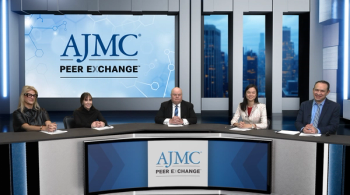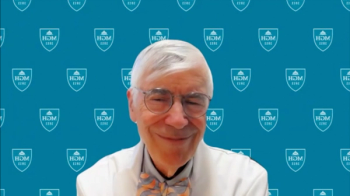
Researchers Identify Potential Markers of Chemotherapy Efficacy in NSCLC
Investigators identified potential markers of chemotherapy efficacy in patients with non–small cell lung cancer.
In patients with advanced non–small cell
The findings, published in
NSCLC makes up the majority of lung cancer cases globally and is divided into 2 subtypes: adenocarcinoma and squamous cell carcinoma. However, “patients with advanced LC can only be treated with chemotherapy, targeted therapy, and chemotherapy-immunotherapy, as these patients have missed the optimal surgical timing due to metastasis,” the authors explained.
Although response evaluation criteria in solid tumors (RECIST) is widely used to evaluate chemotherapy and radiotherapy efficacy, this method is limited in that “it is hard to objectively evaluate the early efficacy of patients undergoing targeted therapy,” they added.
As CT perfusion imaging can accurately reflect the blood perfusion of tumors, the researchers set out to evaluate the survival rate of NSCLC patients based on these parameters.
Sixty patients with advanced lung cancer who received treatment at a center in China between 2018 and 2020 were included in the analysis. Thirty-three patients were male, and the mean (SD) patient age was 65.4 (7.4) years. All individuals were treated with concurrent radiotherapy and chemotherapy and had their lungs scanned by a spiral CT machine prior to and following treatment.
Of those who underwent treatment, 42 were classified as in remission and 18 into a nonremission group based on RECIST.
Analyses revealed:
- After chemotherapy, patients with remission showed lower BF, blood volume, and PS levels in pulmonary lesions than those without remission (all P<.05)
- According to the 1-year follow-up results, 33 patients survived and 27 patients died, and the survivors showed lower BF and PS levels than those who passed away (both P < .05)
- BF and PS are promising indexes for evaluation of the survival of patients, but receiver operator characteristic curve–based analysis showed the 2 have clinical value only when their areas under the curves exceed 0.6
Overall, “CT perfusion parameters demonstrated both predictive and evaluative value for the clinical efficacy in patients with advanced NSCLC, which further confirmed the clinical value of CT perfusion imaging in LC prognosis,” the authors wrote.
Future prospective studies with larger sample sizes are needed to confirm the findings, while the lack of a subgroup analysis on patients with different types of LC marks a limitation to the current study.
Reference
Lin G, Sui Y, Li Y, Huang W. Diagnostic and prognostic value of CT perfusion parameters in patients with advanced NSCLC after chemotherapy. Am J Transl Res. 2021;13(12):13516-13523.
Newsletter
Stay ahead of policy, cost, and value—subscribe to AJMC for expert insights at the intersection of clinical care and health economics.



























































